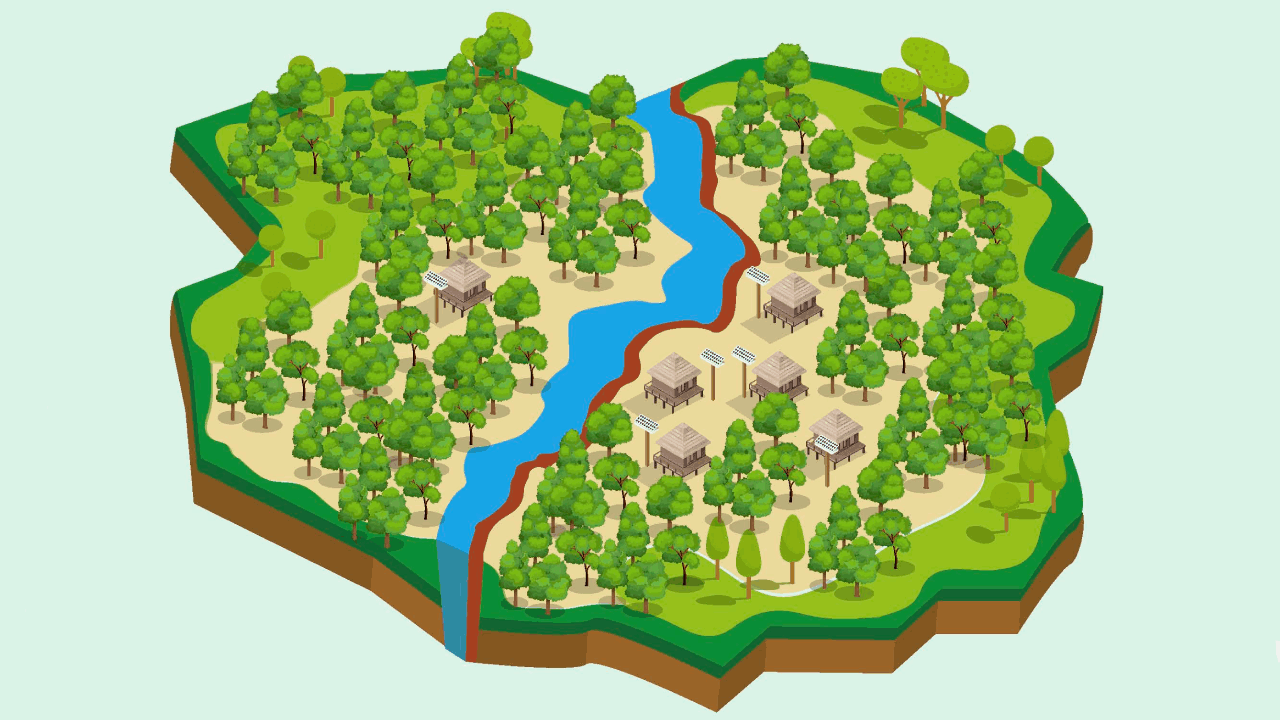The remotest place on Earth is protected by nature’s elements. It stays hidden to those who dare not explore it. Yet, if they did, they would discover a magic world of animals, vegetation, landscapes, color, smells and sounds known by few and dreamed of by many. It is a world that has remained unchanged for thousands of years, immune to the passing of time.
They would also discover a way of life tied to nature and tradition, where people live together in perfect harmony with their surroundings, from which they receive all they need to live, but which is occasionally responsible for limiting the development of their communities and dimming their future.
To enter this almost unexplored world, one must complete a journey made perilous by constant adversity, but in the knowledge, nevertheless, that the reward is worthwhile. This is the story of electricity’s journey to the heart of Amazonia, the remotest place in the world. Join us for the ride!
Amazonia is the tropical rainforest that lies in the basin of the Amazon River. It occupies an area of 6.7 million square kilometers, equivalent to 4.5% of all the land on Earth. The length and breadth of this lung of the planet extends across nine countries of the central and northern expanses of South America and is one of the world’s most biodiverse eco-regions. Despite its worrying deforestation rate – it loses an average of 113,056 hectares of forest a year – most of the territory remains the same, shared by human settlements in the river basins.
Our story is set in one of these basins, that of the Napo River as it passes through Peru. Stretching 1,130 kilometers from its source in Ecuador to its mouth in the Amazon, this important tributary steers a course through the Northern Rainforest of Peru, serving the many communities that live placidly on its banks.
The Napo River is not only a source of water from which families feed and fish and water their crops, it is the only transport means for reaching the outside world, as access to these settlements is exclusively by river. This disadvantage is compounded by a lack of electricity, which constrains the development of these communities.
Overcoming the first problem, to help solve the second, is the aim the acciona.org Foundation. With the Amazon Light at Home program, the idea is to take clean, social and economically sustainable electricity to the most isolated populations of the Peruvian Amazon. The first area of action for Amazon Light at Home is the Napo River basin, which travels nearly 600 km through the Northern Peruvian jungle to its mouth near the city of Iquitos. Despite their proximity to the Amazon capital, it takes a long time to get to the villages, needing several full days of navigating the river system to reach communities that rarely dispose of a modern slideway for an outboard-motor-driven craft. Instead, people use peque-peques for transport, small canoe-like vessels made of wood.
These special difficulties in the field, however, have not stopped 325 people in 61 homes benefiting from the new electricity supply service provided by the Light at Home program, and the number of users subscribing to it is scheduled to grow to 2,000 in more than 400 homes by summer 2018.
ACCIONA is working to permit the Amazon communities to access this efficient, cheap and sustainable electricity supply - and the service has been enthusiastically welcomed since the program began: 100% of users are satisfied or very satisfied, 88% of them find it easy to install, 98% notice the savings in energy consumption (estimated at 50%) and 100% consider the service to be good and would recommend it to others.
This data was obtained from the survey carried out with the 61 beneficiaries of the pilot project, which was undertaken with co-financing from IDEAS AUDACES, tendered by Peru’s National Fund for Scientific and Technological Development and Innovation. The project was then extended to another 350 families thanks to the collaboration of Spain’s Madrid Polytechnic University, ICAI Engineers’ Development Foundation and Comillas Pontifical University, with co-financing from the Spanish Agency for International Development Cooperation (AECID), through its Innovative Development Actions tender.
The electricity service is offered through Third Generation Solar Home Systems, the same technology used in the Oaxaca Light at Home program developed in Mexico. The electricity generated by the solar photovoltaic panel is stored in efficient lithium-ion batteries and is enough to supply an average of six hours electric light per day through two fixed LED lamps and a rechargeable lantern, the system itself, connections to electro-domestic equipment, and the charging of a mobile phone.
If any faults occur, users head to the authorized Light at Home Center, where technicians from the area, trained by ACCIONA, provide repair services, information and advice about the solar home systems and their components, as well as compatible electrical equipment (lamps, radios, televisions, chargers, etc.) which can be acquired in these centers.
One of the main novelties of the Amazon Light at Home program, with respect to other ACCIONA actions is the pre-payment system.
Through this arrangement, the user pays the cost of the quota every 90 days and receives a code to be introduced in the solar system in order to receive the electricity. In this way, staff do not to go around cutting off supply due to non-payment and then reconnecting users once a debt has been settled. This has a direct impact on the efficiency of the supply model and the sustainability of the service, and also allows the quarterly quota to be offered more cheaply.
Thanks to ACCIONA, light travels to the remotest part of Earth, guaranteeing a better future for its inhabitants.
